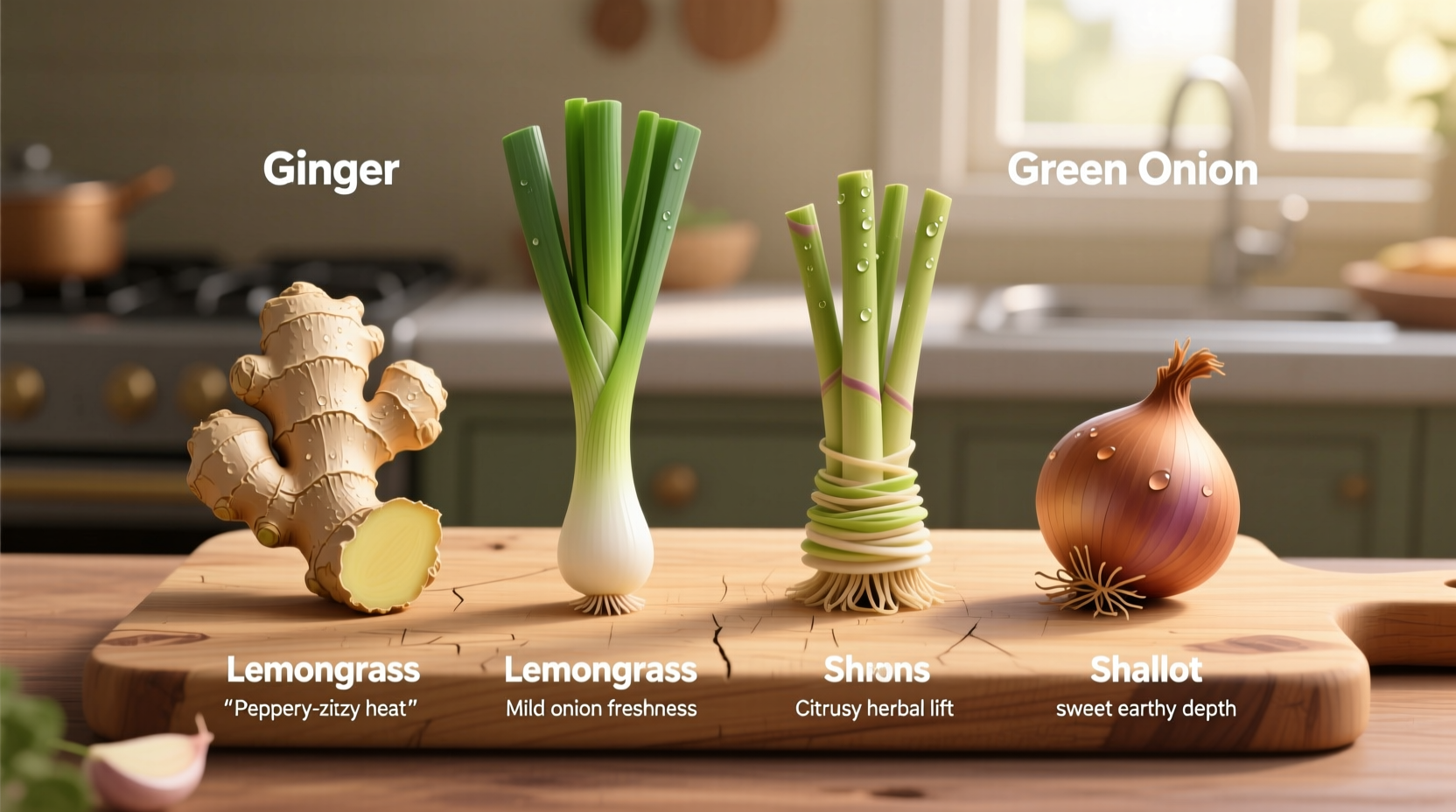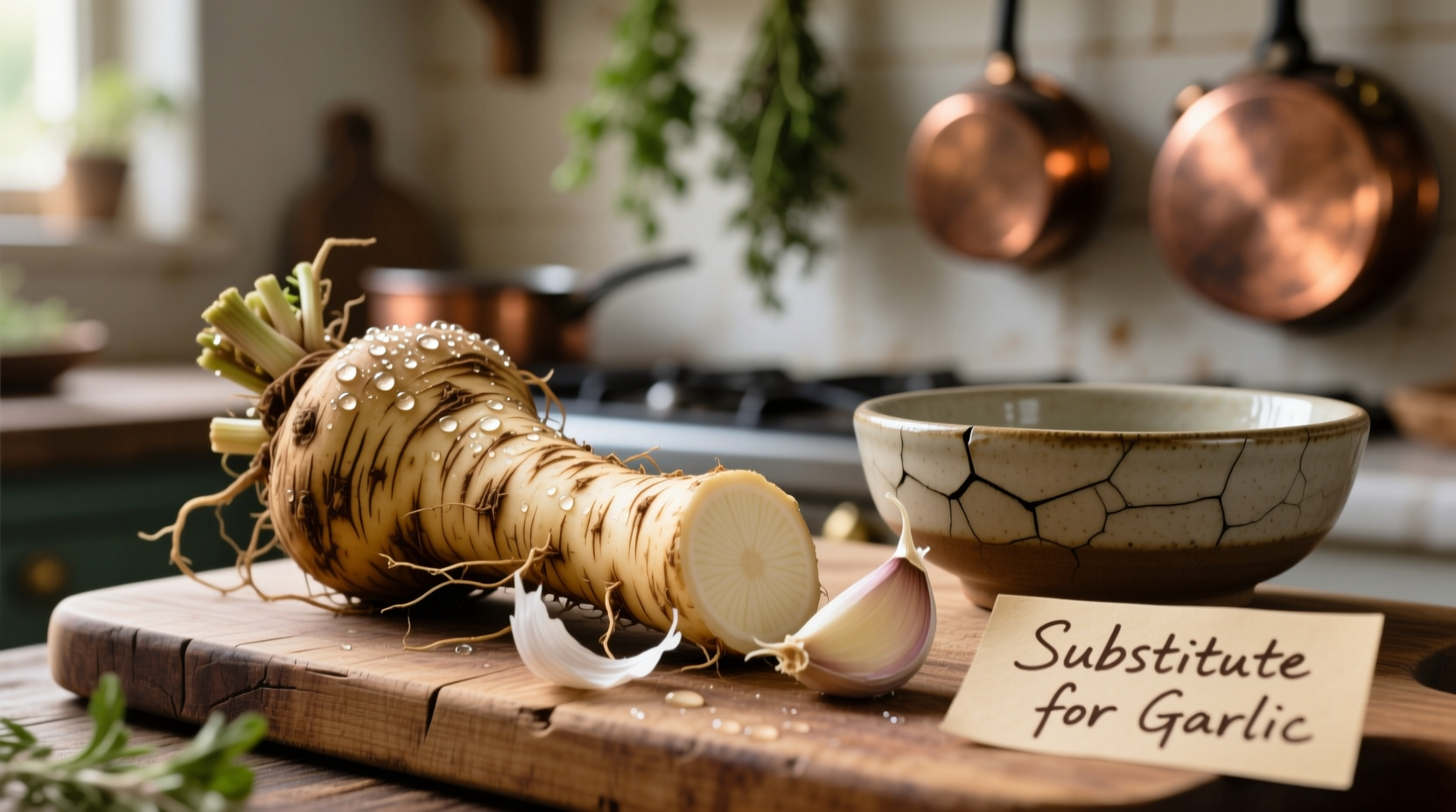If you need a garlic substitute, the best options depend on your specific cooking needs: onion powder works well for general savory dishes (use 1/2 tsp per clove), chives provide mild garlic flavor in raw applications, and asafoetida is ideal for Indian cuisine (use just a pinch). For low-FODMAP needs, garlic-infused oil delivers flavor without the problematic compounds.
Running out of garlic mid-recipe? Dealing with dietary restrictions? You're not alone. Professional chefs and home cooks face this challenge daily. The right substitute can save your dish while maintaining flavor integrity. Let's explore practical solutions that work across various cooking scenarios.
Why You Might Need Garlic Alternatives
Garlic intolerance affects approximately 15-20% of people with IBS, according to Monash University's low-FODMAP research. Other common reasons include:
- Allergies or sensitivities
- Recipe-specific flavor balancing
- Ingredient availability issues
- Dietary restrictions (low-FODMAP, religious dietary laws)
Top Garlic Substitutes by Cooking Method
Your cooking technique determines the best substitute. Here's what works for each application:
For Raw Applications (Salad Dressings, Dips)
- Chives: Provides mild onion-garlic flavor (use 1 tbsp fresh chives per clove)
- Green onion tops: Offers subtle garlic notes (use 1 tbsp per clove)
- Garlic-infused oil: Delivers authentic flavor without FODMAPs (use 1 tsp per clove)
For Sautéing and Cooking
- Onion powder: Most versatile dry substitute (use 1/2 tsp per clove)
- Shallots: Provides similar complexity (use 1 tbsp minced per clove)
- Asafoetida (hing): Essential for Indian cuisine (use 1/16 tsp per clove)
For Roasting and Slow Cooking
- Leek greens: Develops sweet, mild garlic-like flavor when roasted
- Celery seed: Adds depth to slow-cooked dishes (use 1/4 tsp per clove)
- Onion: Caramelizes to create similar savory notes
| Substitute | Best For | Ratio | Flavor Notes |
|---|---|---|---|
| Onion powder | General cooking, dry rubs | 1/2 tsp per clove | Milder, sweeter than garlic |
| Asafoetida | Indian cuisine | Pinch per clove | Pungent when raw, transforms when cooked |
| Garlic-infused oil | Low-FODMAP diets | 1 tsp per clove | Authentic flavor without problematic compounds |
| Chives | Raw applications | 1 tbsp per clove | Mild, fresh garlic-onion flavor |
Dietary-Specific Substitutes
Low-FODMAP Options
According to Monash University's certified low-FODMAP guidelines, garlic contains fructans that trigger digestive issues for many people. The only garlic-derived option that's low-FODMAP is garlic-infused oil, where the garlic compounds remain in the solid garlic while the oil absorbs flavor. Use 1-2 tsp per clove of garlic called for in recipes.
Allergy-Friendly Alternatives
For true garlic allergies (less common than intolerance), avoid all Allium family members. Try:
- Celery seed: Provides similar savory depth
- Radish greens: Cooked greens offer mild pungency
- Black pepper and paprika blend: Creates complexity in spice rubs
Regional Flavor Matching Guide
Garlic plays different roles across global cuisines. Match your substitute to the dish's origin:
Mediterranean Dishes
Use oregano and onion powder (1/4 tsp each per clove) for Italian and Greek dishes. The herbal notes complement olive oil-based recipes where garlic typically shines.
Asian Cuisine
For Chinese and Thai dishes, ginger and scallions provide the aromatic base garlic normally delivers. Use 1 tsp minced ginger and 1 tbsp scallion per clove of garlic.
Mexican and Latin American
Epazote (use 1/4 tsp dried per clove) works well in bean dishes, while cumin (1/8 tsp per clove) provides earthiness in meat dishes.

Common Mistakes to Avoid
Even with the right substitute, these errors can ruin your dish:
- Using too much asafoetida: This potent spice can dominate a dish if overused
- Adding substitutes at the wrong time: Delicate flavors like chives lose potency when cooked too long
- Ignoring flavor transformation: Some substitutes (like shallots) develop different flavors when cooked versus raw
- Mixing incompatible substitutes: Combining multiple strong substitutes creates flavor confusion
Historical Context of Garlic Substitutes
Garlic has been used for 7,000 years, but substitutes emerged when trade routes were disrupted. During World War II rationing, cooks turned to asafoetida as a garlic alternative in the UK. In traditional Japanese cuisine, nira (garlic chives) served as a milder alternative when garlic was scarce. Modern food science has revealed that garlic's key flavor compound, allicin, forms when garlic is crushed, explaining why some substitutes work better in certain applications than others.
Practical Implementation Tips
Professional chefs recommend these techniques for seamless substitution:
- Layer flavors: Combine two mild substitutes rather than one strong one
- Adjust timing: Add substitutes later in cooking to preserve delicate flavors
- Taste as you go: Substitute flavors develop differently than garlic
- Consider texture: Powdered substitutes work better in sauces, fresh in salads











 浙公网安备
33010002000092号
浙公网安备
33010002000092号 浙B2-20120091-4
浙B2-20120091-4